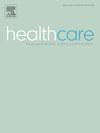Association between patient-reported financial burden and catastrophic health expenditures in cancer survivors
IF 2.1
4区 医学
Q3 HEALTH POLICY & SERVICES
Healthcare-The Journal of Delivery Science and Innovation
Pub Date : 2024-09-23
DOI:10.1016/j.hjdsi.2024.100752
引用次数: 0
Abstract
Purpose
To measure rates of patient-reported financial burden, compare them across cancer types, and determine whether they are predictive of catastrophic health expenditures (CHE).
Methods
We extracted data from the Medical Expenditures Panel Survey from 2011 to 2017 to conduct a retrospective population-based cohort study and multivariable logistic regression to assess the financial burden of cancer across 16 cancer types and compare patient-reported metrics to CHE rates.
Results
Patients with ovarian cancer were most likely to report inability paying bills (34.5 %) and filing for bankruptcy (9.4 %), while patients with thyroid cancer were most likely to incur debt (22.4 %). Patients with kidney cancer had the highest mean debt ($46,915). CHEs were independently predicted by inability to pay medical bills (OR [95 % CI], 1.96 [1.14–3.35]) and bankruptcy filing (OR [95 % CI], 3.90 [1.21–12.60].
Conclusions and implications
We report important variations in the financial burden across cancer types and underscore the importance of assessing how patient-reported measures are related to CHEs. Policy implications. The financial burden of cancer care could explain the lack of improved outcomes with increased national health spending.
癌症幸存者中患者报告的经济负担与灾难性医疗支出之间的关系
方法我们从2011年至2017年的医疗支出小组调查中提取了数据,开展了一项基于人群的回顾性队列研究和多变量逻辑回归,以评估16种癌症类型的癌症经济负担,并将患者报告的指标与灾难性医疗支出(CHE)率进行比较。结果卵巢癌患者最有可能报告无力支付账单(34.5%)和申请破产(9.4%),而甲状腺癌患者最有可能负债(22.4%)。肾癌患者的平均债务最高(46,915 美元)。无法支付医疗账单(OR [95 % CI], 1.96 [1.14-3.35] )和申请破产(OR [95 % CI], 3.90 [1.21-12.60] )可独立预测CHEs。对政策的影响。癌症治疗的经济负担可以解释为什么增加国家医疗支出却无法改善治疗效果。
本文章由计算机程序翻译,如有差异,请以英文原文为准。
求助全文
约1分钟内获得全文
求助全文
来源期刊

Healthcare-The Journal of Delivery Science and Innovation
HEALTH POLICY & SERVICES-
CiteScore
4.90
自引率
0.00%
发文量
37
期刊介绍:
HealthCare: The Journal of Delivery Science and Innovation is a quarterly journal. The journal promotes cutting edge research on innovation in healthcare delivery, including improvements in systems, processes, management, and applied information technology.
The journal welcomes submissions of original research articles, case studies capturing "policy to practice" or "implementation of best practices", commentaries, and critical reviews of relevant novel programs and products. The scope of the journal includes topics directly related to delivering healthcare, such as:
● Care redesign
● Applied health IT
● Payment innovation
● Managerial innovation
● Quality improvement (QI) research
● New training and education models
● Comparative delivery innovation
 求助内容:
求助内容: 应助结果提醒方式:
应助结果提醒方式:


